6 Iconic Leonard Nimoy Moments From The Star Trek Films
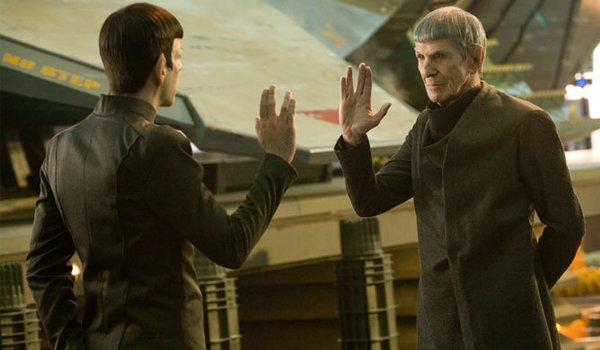
The passing of science fiction icon, Leonard Nimoy at the age of 83 is probably the biggest blow dealt to the massive legion of Star Trek devotees who have long-followed the venerable, nearly 50-year-old epoch-shaping franchise. Perhaps, no other single individual in the history of television and film left quite as a profound imprint on popular culture as the Nimoy’s portrayal of Spock would accomplish. With Spock’s signature pointed half-Human, half-Vulcan ears and obstinate adherence to cold, hard logic, it made him arguably one of the most influential characters of all time.
While Mr. Nimoy’s contributions to the medium of television is vast as it was poignant, we decided to take the time to celebrate some of the man’s greatest cinematic moments as Spock with the Star Trek franchise. Take a trip down memory lane with us.
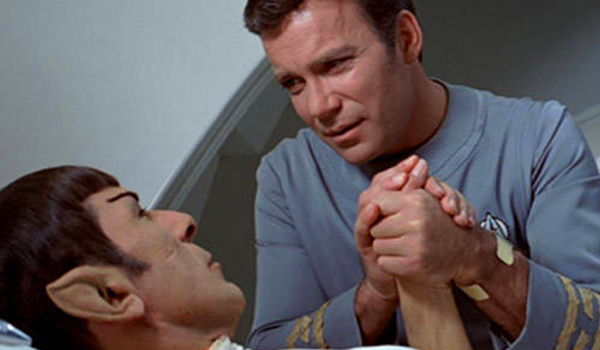
6. Star Trek: The Motion Picture - This Simple Feeling
This 1979 post-Star-Wars cinematic relaunch was the culmination of a decade-long effort to bring back the Star Trek franchise, after it had been cancelled by NBC in 1969 and various efforts to revive the show throughout the 70’s would fail. Unfortunately, despite the happy nostalgic glow, the film was very much an aesthetic product of its time. This resulted in it becoming a lengthy outer space odyssey of people in disco uniforms, with way-too-lengthy space shots seemingly meant to give a prospective audience time to reload their bongs and flip the copy of The Dark Side of the Moon they had playing on a nearby turntable.
However, this Star Trek: The Motion Picture scene in particular, proves to be a dramatic diamond in the rough. After Spock takes the initiative to attempt a Vulcan mind meld with the powerfully sublime super-computer, V’Ger, we get what is essentially the most profound bit of exposition about the film’s foe. Its cold, calculating inability to understand anything other than its vast gathered data is now apparent. Grabbing Kirk's hand, an exhausted Spock reveals that "this simple feeling" was something beyond the V'Ger's comprehension. Besides cementing the friendship between Spock and Kirk, it was the ultimate irony for the logic-adhering Spock to be freaked out by a concept that, on paper, is the Vulcan equivalent of Nirvana.
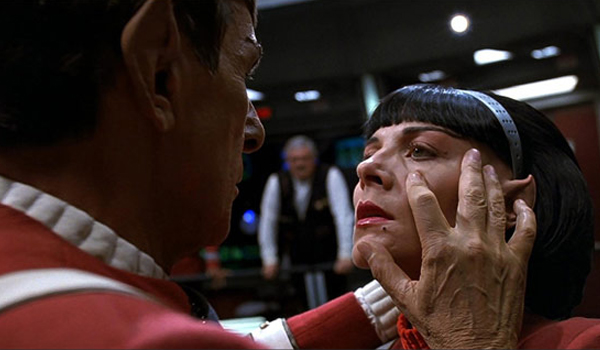
5. Star Trek VI: The Undiscovered Country - The Interrogation of Valeris
1991 would give us the sixth and final Star Trek film to focus on the original crew, which was a well-received thriller filled with action, mystery and intrigue. Things get real interesting after a cleverly-executed ruse would reveal that Spock’s young Vulcan understudy, Lt. Valeris (played by a post-Porky’s, pre-Sex and the City Kim Cattrall) was, in fact, the saboteur who engineered the assassination of a Klingon Chancellor, framing Kirk and McCoy in a conspiracy to stop what some felt was a dangerous peace between the Federation and the Klingons.
Your Daily Blend of Entertainment News
In this scene, we learn that Spock doesn’t do "disappointed" very well. Seemingly throwing decorum in the trash can, not even giving a crap that the entire bridge crew was watching, he violently grabs his formerly promising apprentice and performs the famous Vulcan mind meld on her to obtain information on an impending assassination attempt on the Federation President. It was as close to "pissed" as we have ever seen Spock. (At least, when not compromised by Vulcan puberty or alien spores.)
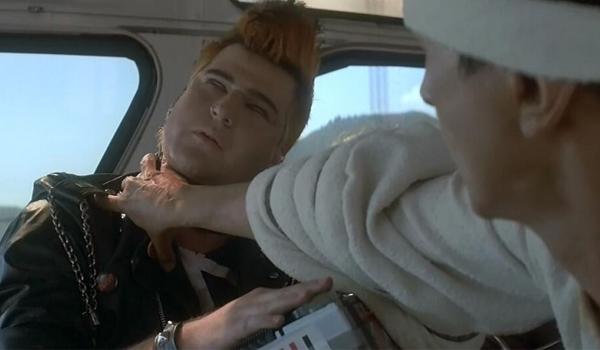
4. Star Trek IV: The Voyage Home - Spock Punks A Punk Rocker
Clearly, the most levity-inflated film in the Star Trek series, the 1986 fourth film, had Kirk and the Enterprise crew travel in a stolen Klingon ship to go back in time to a then-contemporaneous San Francisco to look for humpback whales to repopulate the species, which are extinct, to mollify a dangerous alien whale-language-speaking probe with the power to destroy the Earth. All the follies and foibles one could possibly expect from the space-exploring Enterprise crew interacting with modern people were on full display. While it may not have been a purist’s Star Trek movie, it packs an entertaining punch that’s also extremely accessible for non-Trekkies to watch.
This scene in particular, in which Kirk and Spock, humbled by circumstances, are forced to trade warp speed vessels and transporters for a public transportation bus, encounter a punk rocker who likes to crank his ghetto blaster to 11. Playing a hard, fast, cacophonous song called "I Hate You" by an obscure punk band called Edge of Etiquette, the normally disciplined Spock seemed to have enough and proactively shuts down both ghetto blaster and punk with a smooth Vulcan nerve pinch, resulting in an astounding applause by his fellow commuters.
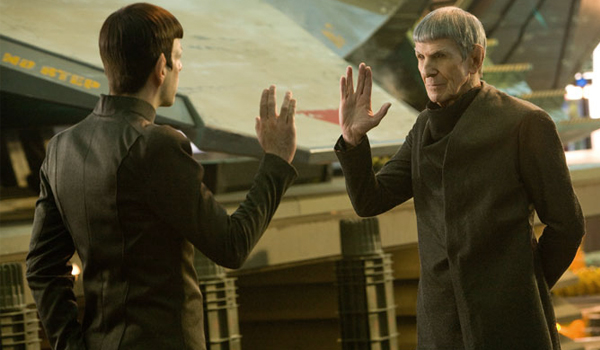
3. Star Trek (2009) - Spock Prime Tells Young Spock How It Is
In J.J. Abrams’ reimagined, energized, youth-infused 2009 reboot of the franchise, we saw an angry, villainous Romulan miner from the 24th century, Nero take his fearsome-looking vessel back in time by 129 years to wreak vengeance on those he perceived responsible for the supernova destruction of his home planet…by destroying the entire planet of Vulcan and indelibly altering the timeline of the entire post-Star Trek: Enterprise Star Trek continuity.
In this scene near the end of the film after the crisis had been averted, young Spock, played by Zachary Quinto, learns the hard way that a lot of us tend to grow up looking like our fathers. At first thinking the aged Vulcan was his father, Sarek, he quickly realized that he was taking a hard look at his own future with his older doppelganger, generally called "Spock Prime," heartfully reprised by Leonard Nimoy. With the presence of a learned, more emotionally balanced version of the character, Spock Prime explains to his befuddled younger self just how much his friendship with James Kirk, someone who had only been an annoyance to him, would eventually shape who he would become.
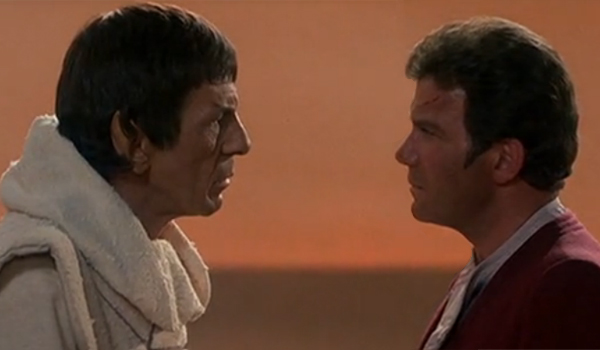
2. Star Trek III: The Search for Spock - Spock's Resurrection & Leonard Nimoy’s Big-Screen Directorial Debut
After the second Star Trek film, The Wrath of Khan put all its dramatic eggs into one risky stunt basket by killing off Spock, fans were left wondering where the franchise was heading. However, throughout that film, Khan chased after a terraforming technology called Genesis, which yielded the ability to turn dead rocks into lively, flourishing, livable planets, but also had the ability to destroy just about anything. Genesis would also become the Star Trek franchise’s "out" in regards to Spock’s death and they ran with it… hard.
In the 1984 film directed by Leonard Nimoy himself, making his in his big-screen debut as a helmer, we saw a more nuanced film set in the aftermath of Spock’s death, which mixed solid action against a group of Klingons looking for the secrets behind Genesis and the somewhat bizarre resurrection of Spock by way said technology, which involved a complete bodily rebirth in a short period of time from infant to middle-aged adult. While the film received a mixed reception, Nimoy used the film as a pathological exploration of Spock as we, in some way, experience the trials and tribulations which formed him, all packed into a short period of time, culminating towards an achievement of some level of status quo.
It would not be Nimoy’s last time behind the camera, as he would direct the aforementioned sequel, Star Trek IV: The Voyage Home and the 1987 box-office comedy smash, Three Men and a Baby.
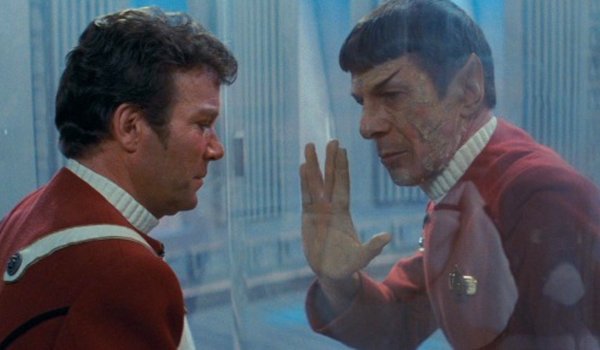
1. Star Trek II: The Wrath of Khan - Spock’s Sacrifice
The fact that this powerful scene from the celebrated second entry in the Star Trek film franchise tops this list should come to no surprise to anyone even remotely familiar with the lore. The Enterprise finds itself adrift in space, dangerously close to the defeated remnants of the hijacked U.S.S. Reliant in which Khan, in his last villainous act, set the life-creating Genesis device on an auto-destruct sequence that will destroy everything in the vicinity, notably the Enterprise. However, getting the Enterprise to run again, would require a trip to a heavily radiation-compromised section of the engine room to manually restore the warp drive. It’s a job that Spock, despite the protestation of McCoy and Scotty, volunteers to tackle, as he is dosed with a fatal amount of radiation.
In this famous scene, Kirk, still reeling in the afterglow of escaping from the explosion and defeating Khan, is called down to the engine room, where he discovers that his best friend has made the ultimate sacrifice, as he lays in the room, waiting to pass. It’s an iconic, saddening scene that has reduced many-a-geek to tears, even knowing the death doesn’t end up sticking. Kirk, a habitual cheater of death must come to terms with what he avoided in the Kobayashi Maru test: That sometimes life does, indeed hand you unwinnable scenarios, and this was one of them.
Spock’s haunting, bittersweet final words through the speaker, "I have been and always shall be… your friend" are justly cemented in the annals of cinematic history.
